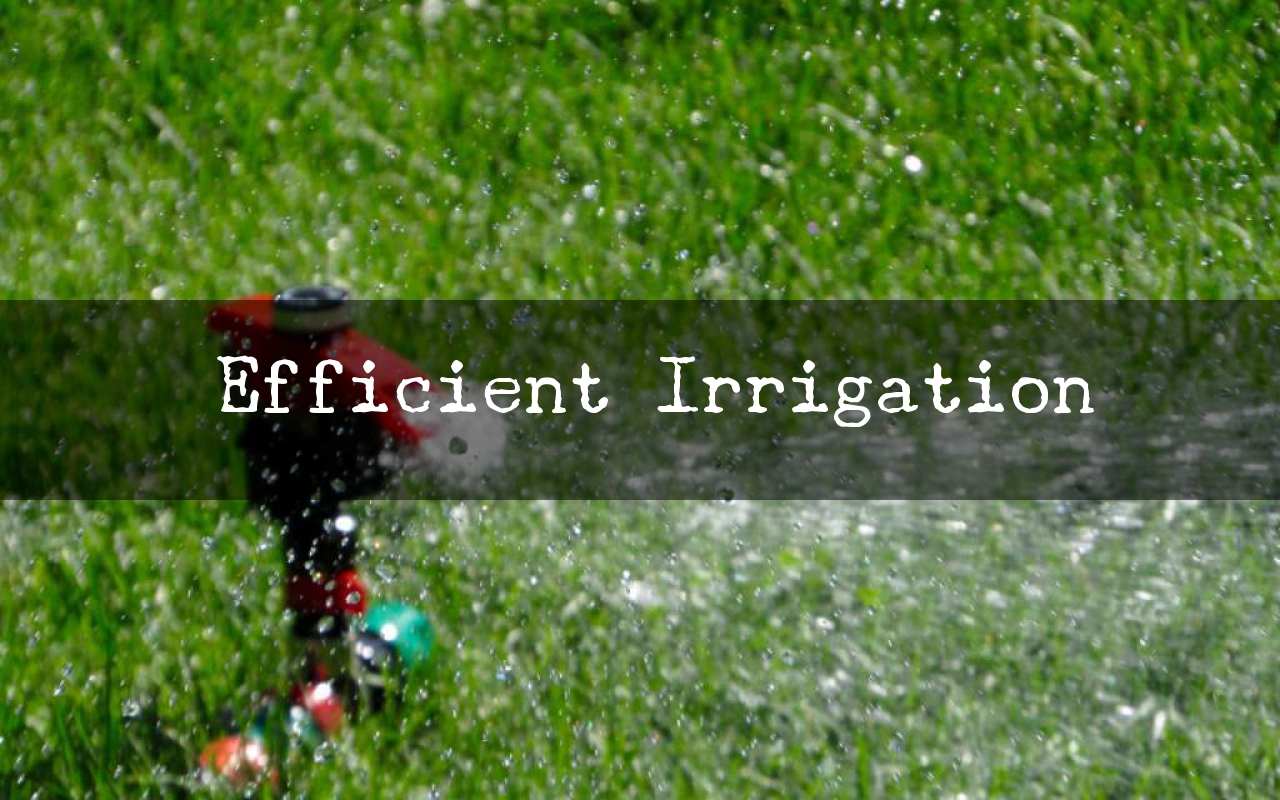Efficient Irrigation
EFFICIENT IRRIGATION: WATERING AND CONSERVING
Just by following a few simple guidelines, water-wise gardeners can create hearty landscapes that can withstand hot, dry conditions.
Pros & cons of different irrigation systems
Watering by the numbers
Water-wise lawn watering
Water-wise landscape watering
Other great watering ideas
PROS & CONS OF DIFFERENT IRRIGATION SYSTEMS.
A good way to prevent overwatering is to install rain or soil moisture sensors to override your automatic watering system when necessary. A rain sensor simply senses rainfall. Once a designated amount of water has been detected, it shuts down any regularly scheduled irrigation. Rain sensors are small, simple devices and are generally less expensive and easier to install and maintain than soil moisture sensors. Soil moisture sensors are more accurate than rain sensors because they can detect moisture at the level of the root system. They are more exact in measuring how much water your plants are receiving and thus offer greater water savings. However, they are somewhat complicated to install and manage.
SPRINKLER SYSTEMS
Sprinklers can cover large areas.
Manual sprinklers require you to open the valve, time the watering yourself and then shut off the flow.
Automatic sprinkler systems offer the benefit of programmable controllers.
Make sure you set automatic sprinklers correctly and adjust it as conditions change.
Water early in the morning to reduce the evaporation rate.
If water runs off your yard, split your watering times into two or more sessions.
Be sure to turn off your system if you’re getting enough water from rain showers.
DRIP IRRIGATION
This system is good for a small yard or for watering individual plants.
Drip irrigation is highly effective at supplying one to four gallons of water per hour directly to the soil.
The advantage of drip irrigation over sprinklers is that there is little water loss due to evaporation or runoff.
It’s particularly good for mulched areas because it can directly soak the soil without washing away the mulch.
HAND WATERING
The simplest and most common irrigation system is a garden hose or a portable sprinkler.
The advantage of hand watering is that you can easily avoid over watering.
Use a nozzle to control the flow.
When water stops being absorbed into the ground, move to another location.
Wait an hour, and then plunge a long screwdriver or space into the ground to check that the soil is moist to a depth of six to ten inches...

